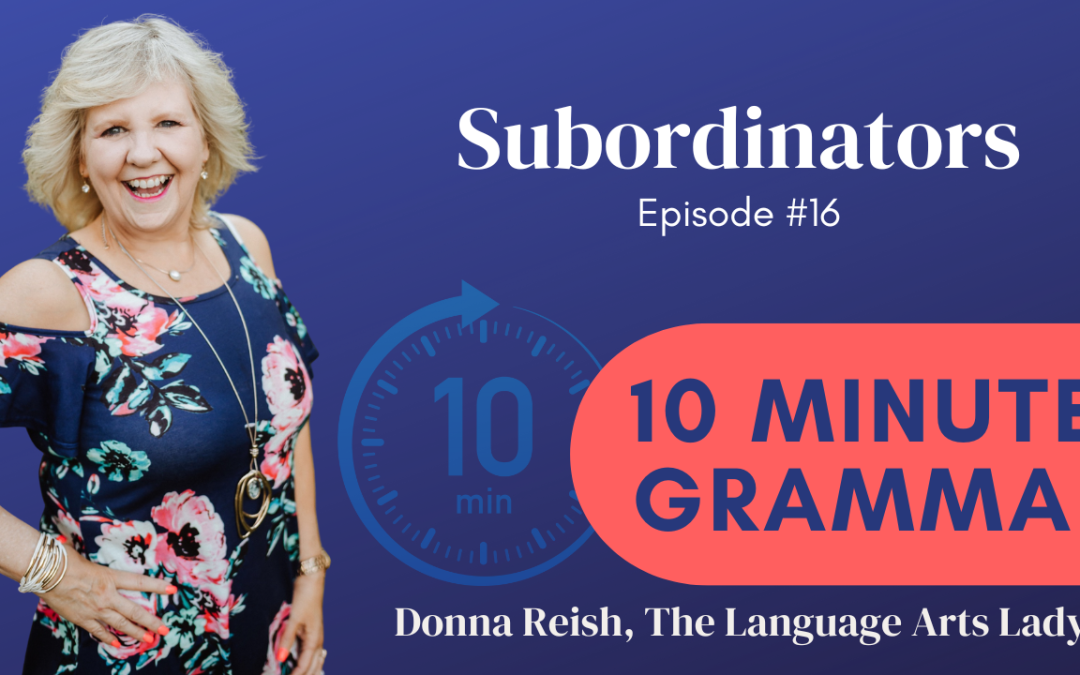When considering “main parts of speech,” there are a lot of lists floating around. The first eleven episodes of this broadcast are made up of 10 First Parts of Speech in Order.
But why are some included and some not? (See 10 MG #1 for more details on that!)
I am an advocate of teaching subordinators (also called by other names—find out why this is the best name in today’s episode!) early and often.
- They make up sentences just like other parts of speech do (though not needed to make a sentence a real sentence).
- They give a sentence more information.
- Most importantly, they require special punctuation!! (As I like to tell my students, “When you start a sentence with a subordinate clause, put the comma in where you hear the pause!”
In this part one of two episodes, I bring you the first two ways I teach subordinators to upper elementary students (or older students who haven’t learned them yet!):
- First seven subordinators learned in rhyme:
Since, when, because, though
As, if, that, although!
- Subordinate-Check Sentence—75% of the dozens of subordinators fit into this check sentence (and, it also shows that subordinators are subordinate to the rest of the sentence—like submarines go down!):
_______ the submarine went down, we could still/not see it.
So much more in this episode: the importance of using phrasing that tells what the part of speech does; how to use voice inflection to teach comma input, and more!
Get your First 10 Parts of Speech in Order posters and student reference ring cards here

